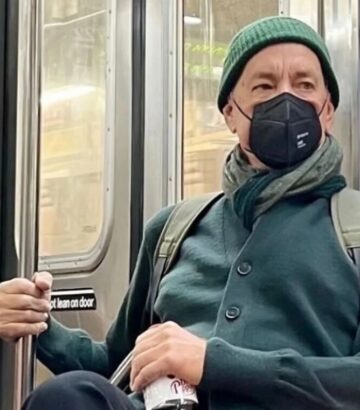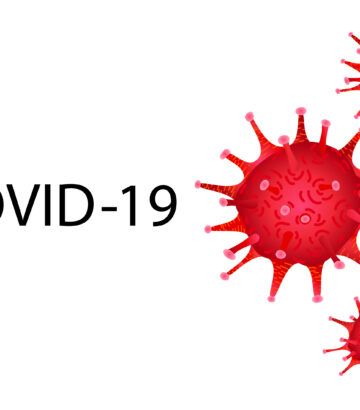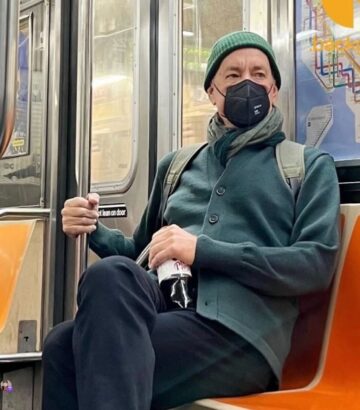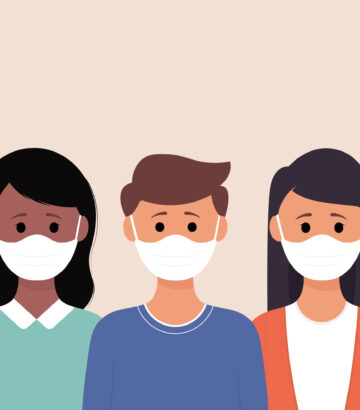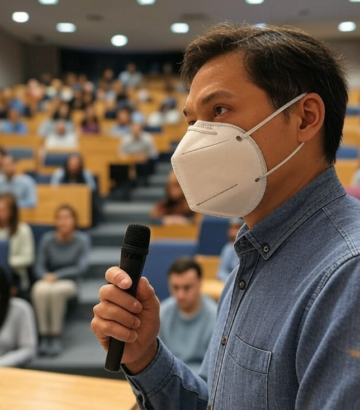Yes, We Continue Wearing Masks—Here’s Why: Common Questions Answered
Picture a typical family gathering today. Most people have moved on from masking: kids run around freely, aunts and uncles chat over snacks, and only a couple of family members still choose to wear well-fitted masks. Soon, the questions start rolling in: “Isn’t the pandemic over?” “Aren’t you done with masks yet?” “But you’re not high-risk!” This Q&A provides evidence-based responses to these and other common objections, offering insight into why we still mask, filter the air, and open windows—knowledge we’ve gained and continue to put into practice.
1. “Isn’t the pandemic over? Isn’t it just a cold now?”
Short Answer: The WHO declared the emergency phase over, not the pandemic. COVID isn’t “just a cold”: it’s a vascular, multi-system infection that still causes substantial illness and deaths, and a significant share develop Long COVID; with each reinfection, risk accumulates.
Detailed Explanation:
- In May 2023, the WHO announced that COVID-19 was no longer a “Public Health Emergency of International Concern,” which characterizes the initial phase of a pandemic. However, the WHO has never ended the pandemic, and has repeatedly cautioned not to speak of COVID-19 in the past tense.
- New variants continue to emerge, and the virus is still causing significant illness and death around the world, even if hospitalizations aren’t at the peak they were before.
- Long COVID (also called post-COVID-19 condition) remains a material risk: it can follow infections of any severity, including mild or asymptomatic cases, and may lead to prolonged, multisystem health problems. The more times you catch COVID, the more damage can accumulate, with the risks of long-COVID symptoms and other health issues adding up over time.
- Deciding whether to wear a well-fitted respirator mask (N95/FFP2 or better) indoors is about limiting the spread of a virus that hasn’t vanished. Just because the “emergency phase” has passed doesn’t mean the risk is gone.
2. “I thought masks don’t work?”
Short Answer: They do, but only when used correctly, and not all “masks” are created equal. The physics is clear: well-fitted respirators (N95/FFP2 or better) cut what you breathe out and what you breathe in. Confusion often comes from studies that used loose surgical/medical masks, allowed people to take masks off while exposed, or mixed very different mask types and fits, conditions that blur the true benefit.
Detailed Explanation:
- Masks capture particles even though “holes look bigger than the virus.” They do not just work like a mechanical sieve. One other mechanism is that the fibers of the mask carry an electric charge that attracts tiny virus-laden aerosol particles like a magnet. This electrostatic effect weakens if the mask gets wet, so change your mask if it becomes damp!
- Dose matters. Infection risk rises with the dose you inhale; cutting that dose (even partially) lowers risk. When both people mask, the reduction compounds, dropping exposure much more than one person masking alone.
- Fit is crucial. Respirators are designed to seal and maintain high filtration across a range of particle sizes. Loose surgical/medical masks mainly help with source control and can leak around the edges; a well-fitted respirator protects you and others.
- Study “null” results often reflect methods, not physics. Trials that permit off-and-on use during exposure, have low adherence to the trial rules, or mix mask types/fits dilute measurable effects. When masks are worn consistently, are high-filtration, and fit well, protection is strong.
- What we can measure matches the theory. Fit-testing and particle measurements show large reductions in both emitted and inhaled aerosols with well-fitted respirators. In real rooms with variable ventilation, that immediate, user-controlled reduction is a reliable layer of protection.
3. “But you’re not high-risk, so why bother wearing a mask?”
Short Answer: Because preventing transmission matters for everyone, not just people in vulnerable groups.
Detailed Explanation:
- You don’t need to be high-risk to care about preventing infections. Even if you don’t get severely ill, you can still pass the virus to someone who could.
- Transmission chains are often invisible. You could unknowingly infect a friend or relative, who then symptomatically or asymptomatically transmits the virus to someone vulnerable, such as an immunocompromised family member.
- Masks reduce the chance of spreading the virus, especially in indoor settings. It’s not just about your personal health but about protecting the wider community—friends, family, and strangers alike.
- Another crucial consideration is the risk of Long COVID, which can affect people of any age or health status. Even if an initial infection seems mild, a significant number of individuals develop long-term symptoms that can impact their daily lives for months—or even longer. Preventing infection helps avoid these potential complications, which is why taking simple precautions like wearing a well-fitted mask makes sense even for those not traditionally labeled “vulnerable.”
- Besides, being sick (with or without long-term effects) can also carry emotional and financial burdens—lost workdays, doctor’s visits, and disruptions to daily routines.
4. “Are you going to wear a mask forever?”
Short Answer: Masks are a tool we can use when and where it makes sense—especially indoors, in poorly ventilated areas, or when community transmission is high.
Detailed Explanation:
- As our understanding of airborne transmission grows, we see that clean indoor air—via ventilation and filtration—makes a huge difference in whether masks are needed. If rooms are well-ventilated or have effective air filtration systems, the need for continuous masking decreases because the overall prevalence of airborne pathogens decreases.
- Right now, many indoor environments still lack adequate ventilation and filtration, and testing before gatherings isn’t a widespread norm. Under these conditions, masking is a straightforward way to reduce risk.
- Respiratory aerosols linger in a room for hours, and it’s only a matter of time before other people breathe them in. COVID-19 doesn’t just follow “flu season” patterns; it’s a year-round concern.
- We hope for future innovations—like faster, more accessible tests, or standard clean-air practices—that might make routine masking less necessary. But until then, wearing a well-fitted mask indoors is a no-brainer in many situations.
5. “My doctor doesn’t wear a mask.”
Short Answer: Healthcare professionals are human too, and institutions vary in their policies. That doesn’t change the science behind airborne transmission or the benefit of masking.
Detailed Explanation:
- Ideally, doctors and healthcare workers should be at the forefront of applying new knowledge about how respiratory diseases spread—just like when handwashing became standard practice in medicine, despite resistance at first.
- Historically, medical communities have sometimes resisted change: for example, when Dr. Ignaz Semmelweis introduced the concept of hand hygiene, he faced enormous pushback. Some doctors believed “a gentleman’s hands are always clean.”
- We now know they were wrong, but that resistance was psychological—no one wanted to admit they might have been harming patients unknowingly. Today, some medical professionals may similarly struggle with the idea that they could have minimized airborne transmission by masking in the past.
- Most healthcare workers adhere to existing infection control policies that have not been updated to new evidence. This delay is not simply a personal shortcoming; it often reflects inadequate institutional leadership, the significant challenges and costs associated with updating policies and investing in clean air infrastructure, and a reluctance among healthcare institutions to fully assume responsibility for protecting both staff and patients.
- Doctors are not infallible or free from cognitive biases; they’re human. Their individual choices, or hospital policy, do not negate the protective effect of masks and good ventilation.
6. “I think kids need to ‘train’ their immune systems. Aren’t you preventing that?”
Short Answer: A child’s immune system doesn’t need to encounter dangerous pathogens to develop. Everyday exposure to common microbes in the environment is enough “training.”
Detailed Explanation:
- It’s a widespread misconception that kids must get infected with illnesses to build up their defenses. In reality, the immune system is constantly learning from harmless bacteria in soil, on surfaces, and in daily encounters.
- Likewise, we wouldn’t deliberately expose children to other severe pathogens—like SARS1, avian flu, swine flu, or tuberculosis—in the name of ‘immune training.’ The same logic applies to COVID-19: it’s not worth risking serious illness just to gain exposure.
- We have vaccines to protect against specific pathogens precisely because we don’t want children to get sick with serious diseases.
- Getting infected with pathogens like COVID-19 or other respiratory viruses is not a necessary step for immune development; it’s a risk we can reduce.
7. “Won’t constant masking weaken your immunity?”
Short Answer: No. Masks don’t block all microbes, and our immune systems still get plenty of stimulation from daily life.
Detailed Explanation:
- Wearing a mask part of the time, particularly indoors in high-risk settings, doesn’t create a sterile bubble around you. You’re still exposed to microbes on surfaces, through food, and in other environments.
- Our immune systems can handle the typical germs we encounter every day; masking simply reduces the risk of inhaling large concentrations of airborne pathogens.
- So, for both adults and kids, the idea that occasional masking weakens immunity has no basis in evidence.
8. “Why bother with open windows and air purifiers?”
Short Answer: Improving indoor air quality is one of the most effective ways to reduce viral particles in the air.
Detailed Explanation:
- Airborne transmission via aerosols is the primary driver in the spread of respiratory-borne viruses such as COVID‑19, influenza, and respiratory syncytial virus (RSV), with most transmission occurring through the inhalation of fine aerosol particles rather than by larger, “ballistic” droplets.
- Whenever people speak, cough, or simply breathe, they produce both droplets and aerosols. Larger droplets fall quickly, but contain less virus overall. Meanwhile, aerosols can remain suspended and disperse throughout the room, increasing infection risk over time.
- Ventilation brings in fresh air, diluting the concentration of viral particles. Filtration devices (like HEPA air purifiers) capture aerosols and reduce their presence in the air.
- Why not clean the air? We routinely wash our hands, clean our bathrooms, and purify our water. Failing to clean the air just leaves a higher viral load floating around, putting everyone at greater risk.
- No single measure is foolproof, but layering masks, ventilation, and filtration offers the best protection.
9. “Why would you wear a mask if you are vaccinated?”
Short Answer: The vaccine is like a safety belt, which does some damage control in the worst-case scenario; the respirator mask is like careful driving that prevents a crash in the first place. Masks are the first layer of protection, while vaccines are the last. Vaccine-acquired immunity wanes more rapidly in the era of Omicron variants and does not reliably prevent onward transmission. By wearing a mask, you reliably protect yourself and others—even in cases of asymptomatic infection—thereby reducing the risk of Long COVID and protecting those who can’t be vaccinated.
Detailed Explanation:
- Waning Immunity: While vaccines significantly lower the risk of severe illness, their protection against infection declines over time—especially since Omicron. Studies show that immunity acquired through both infection and vaccination can drop substantially within months, making breakthrough infections increasingly likely, and masks help reduce this risk.
- Asymptomatic Transmission: Many infections in vaccinated individuals are initially milder or even asymptomatic, meaning many people may unknowingly spread the virus. Masks reduce the risk of spreading the airborne virus, which is vital for curbing this silent transmission.
- Long COVID Risk: Although vaccination cuts the risk of Long COVID, it does not eliminate it entirely. Preventing infection in the first place remains the best defense, especially since even mild cases can lead to long-term problems.
- Protecting the Vulnerable: Not everyone can be vaccinated—due to medical conditions, age, or a compromised immune system. Not everyone is able to wear masks—such as babies or those with certain respiratory conditions. By masking, you help protect these vulnerable individuals and add a collective layer of defense.
- Layered Protection: Combining vaccination with masking creates multiple, overlapping barriers against the virus. This layered approach is essential for reducing overall transmission, keeping both individuals and communities safer.
10. “If you’re wearing a mask, why should I?”
Short Answer: Two-way masking protects everyone better than one-way masking for one simple reason: source control. Your mask reduces what you exhale (source control) and what you inhale (personal protection). Because many infections spread silently and not everyone can mask all the time, masking together sharply lowers risk, for you and for the people around you.
Detailed Explanation:
- Masks aren’t perfect, and that’s why two-way helps. Real-world fit, movement, and talking can create small leaks. Two masks on two faces hedge those imperfections and cut the dose you breathe and the dose others receive.
- Most transmission is invisible. People can be contagious before symptoms or without ever noticing they’re sick. Two-way masking breaks these silent chains, protecting your own health and the people you’ll see next.
- Not everyone can mask all the time, and some can’t mask at all. We remove masks to eat or during medical/dental care, and infants and some people with certain conditions may not be able to mask. Community two-way masking fills these gaps and protects those who rely on others.
- Layering multiplies protection. Two-way masking, combined with clean indoor air (ventilation/filtration), reduces risk far more than any single step. Small percentage cuts stack up and make infections much less likely for everyone present.
11. “I think you’re living in fear!”
Short Answer: It’s not fear—it’s applying what we know. Like wearing a seatbelt or a bike helmet, it’s a sensible precaution that lets us go about our day with peace of mind.
Detailed Explanation:
- When we fasten our seatbelts, we’re not paralyzed by fear of car crashes; we’re simply using a measure proven to reduce harm if an accident occurs.
- Likewise, wearing a well-fitted mask indoors (especially in poorly ventilated spaces or during high transmission periods) is a practical step to avoid getting sick or spreading illness.
- Sometimes, denying or ignoring new information can also be driven by fear—fear of change, fear of facing difficult facts, or fear of what those facts might mean for our routines.
- Rather than living in fear, we’re living with awareness. We recognize that this new ‘routine’ looks different for everyone. For some, mitigating risks means using well-fitted masks, filters, and tests when visiting family, working, or attending social events. For others, it means connecting through virtual gatherings, working or studying from home, or even choosing alternative travel methods like RV life. All these precautions are not only about protecting personal and family well-being—they’re also a meaningful way to safeguard our communities.
12. “But I want things to go back to normal!”
Short Answer: We all do. Yet we also have new knowledge that can help us keep each other safer and healthier, so “normal” might need a slight update.
Detailed Explanation:
- Hundreds of people still die from COVID-19 each week in countries like the United States alone, and globally the toll is higher. If there were a natural disaster or accident claiming that many lives regularly, we’d be alarmed and look for solutions.
- We now know that COVID-19 (and other airborne pathogens) can spread from people who show no symptoms—so half of infections may come from those who don’t realize they’re contagious.
- Returning to a 2019 mindset ignores the real progress we’ve made in understanding airborne transmission. We don’t live in the past—our knowledge has evolved.
- It’s also important to consider how vulnerable individuals feel when the rest of us choose not to use the tools at our disposal. If someone is immunocompromised or has other risk factors, seeing people ignore what we now know about airborne transmission can be profoundly isolating. They may feel forced to avoid gatherings altogether. By incorporating simple measures like masking, ventilation, or testing, we include everyone—no one has to be left out or left behind.
- By taking precautions such as masking, ensuring good ventilation, or using testing, we can prevent a lot of unnecessary illness and death. The fact that we didn’t do these things before 2020 doesn’t mean we shouldn’t do them now that we know better.
New information often leads us to adjust our habits—just like handwashing became standard practice after we learned about germs. Masking, improving indoor air quality, and using testing are extensions of that same principle. These measures aren’t about panic or living in fear; they’re about embracing simple, evidence-based tools to safeguard our health and the health of those around us. We can still enjoy holidays, family get-togethers, and everyday life, all while being mindful of how illnesses spread and how we can help stop them.
Bonus Benefits: By masking with quality respirators, you are not only protected from COVID, but also from other airborne infections like influenza, tuberculosis, measles, RSV, and more. You are also protected from pollution, allergens, and other particles that can cause respiratory issues.
